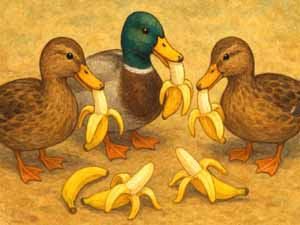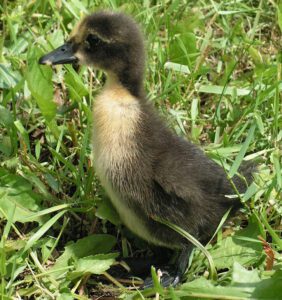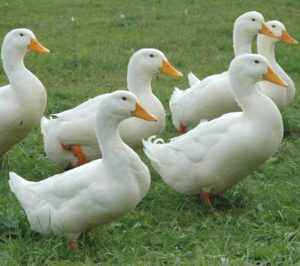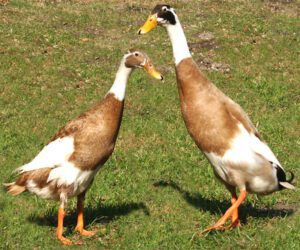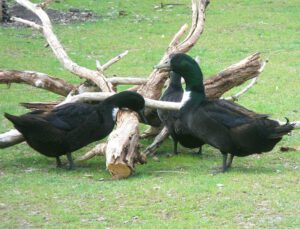The Shetland duck is currently a critically endangered breed of domestic duck. It was originated from the Shetland Island in the very north of Scotland. Due to the appearance of the breed, is thought to have developed from the Pomeranian duck or from the Swedish Blue duck.
Shetland duck is native to the Shetland Island in Scotland which is the northern reaches of the United Kingdom. It is thought that the Vikings brought the Shetland duck to Britain. Today it is one of the rarest breed of ducks and warrants special attention to conserve this breed.
Actually the breed was thought extinct in the early 1990s until a flock was found in the Shetlands and breeding was begun to increase their numbers. Review characteristics, uses, special notes and full breed profile of the Shetland duck below.
Shetland Duck Characteristics
Shetland duck is classed as a small breed of duck. It is similar in appearance to it’s ancestors, the Pomeranian and Swedish Blue duck. It is a very appealing bird, and a little bigger than the Mallards. The breed is black with a white bib, and typically has blue bills.
Both drakes and ducks have a deep black color at maturity with a white bib. Although the bib tends to be irregular. The main difference between Shetland duck and drakes are their beaks. The ducks have an almost black beak, white the drakes have dark green beaks.
The drakes have orange color on their legs, but the legs of the ducks are black. The ducklings are dark brown with buff breasts, and the color contrast will increase in accordance with their age.
Adult Shetland duck has glossy black plumage shot through with green/blue, like a Cayuga. But with a white breast and sometimes white spots on the head too. The white plumage increase in accordance with the age of the ducks.
Average body weight of these ducks is about 1.8 kg, and drakes weight about 2 kg. Photo from Wikipedia.
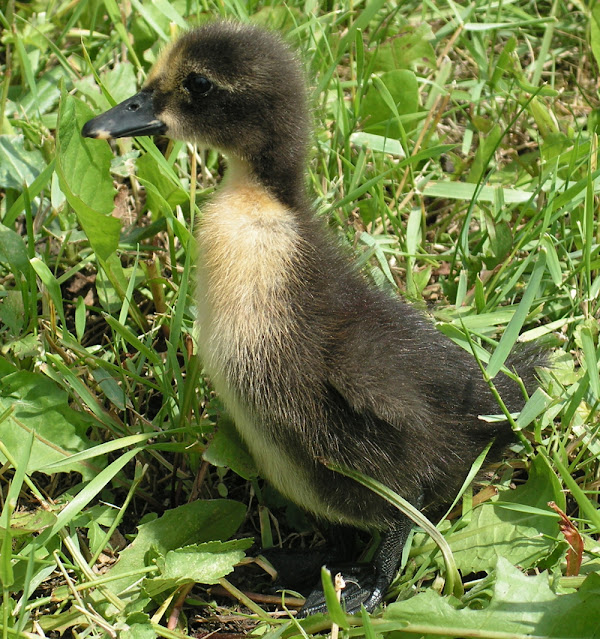
Uses
The Shetland duck is raised mainly for eggs production. The breed is not suitable for meat production due to their small size.
Special Notes
Shetland ducks are quite tough and cold hardy breed. They are busy ducks, always active and very good foragers. They are very friendly with calm temperament. They are lovable and productive little birds to anyone, even they are good breed for the beginners.
Ducks usually lay up to 150 eggs per year and tend to go broody. Their egg color is white. However, review full breed profile of this duck breed in the chart below.
| Breed Name | Shetland |
| Other Name | None |
| Breed Purpose | Eggs |
| Special Notes | Active, Calm, Friendly, Excellent Foragers |
| Breed Class | Light |
| Broodiness | Average |
| Ducks | 1.8 kg |
| Drakes | 2 kg |
| Climate Tolerance | All Climates (extremely cold hardy) |
| Egg Color | White |
| Egg Size | Small |
| Egg Weight | Around 50 grams |
| Egg Productivity | Medium |
| Flying Ability | Good |
| Rarity | Rare |
| Varieties | Black |
| Country of Origin | Scotland |
